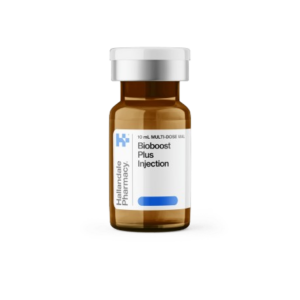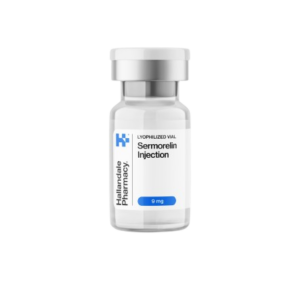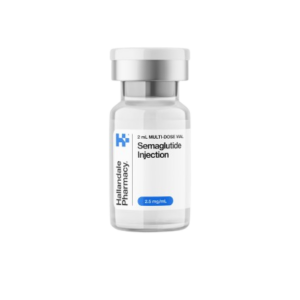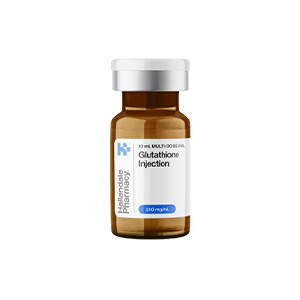Compounded Semaglutide 3 month starter
$489.00
- 3 month supply
- 3 vials, one per month
- Refrigeration required
- Syringes and alcohol prep pads included
- Overnight shipping included
- Healthcare provider contact within 24 hours of purchase if more information needed (will not be charged unless prescribed).
Description
New to Semaglutide? We’ve got you! 90 day supply shipped in one convenient package.
Month 1
Weeks 1-4: Semaglutide/Pyridoxine 1mg-8mg/ml (1ml)
Inject 0.25 mg (25 units on syringe) subcutaneously weekly (total 1mg per month)
Month 2
Weeks 5-8: Semaglutide/Pyridoxine 5mg-8mg/ml (1ml)
Inject 0.5 mg (10 units on syringe) subcutaneously weekly (total 2mg per month)
Month 3
Weeks 9-12: Semaglutide/Pyridoxine 1mg-8mg/ml (1ml)
Inject 1.0mg(20 units) subcutaneously weekly (total 4mg per month)
Semaglutide is typically administered as a subcutaneous injection (under the skin) once a week, usually in the abdomen, thigh, or upper arm.
Self administering a subcutaneous injection:
- Prepare the Injection:
- Wash your hands thoroughly.
- Gather all necessary supplies (medication, syringe/pen, needle, alcohol swab, and a gauze or bandage).
- Select Injection Site:
- Common sites are the abdomen (avoiding 2 inches around the belly button) or the upper thigh.
- Clean the chosen area with an alcohol swab and let it dry.
- Prepare the Syringe:
- If using a syringe, draw the prescribed dose of medication.
- Pinch the Skin:
- Gently pinch the skin of the injection site to lift it away from the muscle.
- Insert the Needle:
- Hold the syringe/pen like a pencil and insert the needle at a 45 to 90-degree angle
- Inject the Medication:
- Slowly press the plunger or button to inject the medication.
- Hold the needle in place for a few seconds to ensure the full dose is delivered.
- Withdraw the Needle:
- Pull the needle out quickly and apply gentle pressure with a clean gauze or cotton ball.
- Dispose of the Needle:
- Dispose of the needle in a puncture-proof container
Dosing Schedule:
Compounded Semaglutide dosing schedule typically starts with a lower dose and gradually increases every 4 weeks to reduce side effects and allow the body to adjust. If your appetite is suppressed at any of the 4 week increments, you can delay increasing the next titrated dose or stay at the lowest effective dose that gives you results without unwanted side effects.
Semaglutide, like all medications, can cause side effects, although not everyone will experience them. Here are some common and serious side effects associated with compounded semaglutide:
Common Side Effects:
- Gastrointestinal Issues:
- Nausea: A common side effect, especially when starting treatment or increasing the dose.
- Vomiting: Can occur, particularly in the early stages.
- Diarrhea or Constipation: Some users may experience changes in bowel movements.
- Abdominal Pain: Discomfort in the stomach area.
- Decreased Appetite: As semaglutide works to reduce appetite, some individuals may experience a noticeable decrease in hunger.
- Fatigue: Some people report feeling tired or fatigued, particularly early on in treatment.
Serious Side Effects:
- Pancreatitis (Inflammation of the Pancreas):
- Symptoms include severe abdominal pain, nausea, and vomiting. If these occur, seek immediate medical help.
- Thyroid Tumors (Including Thyroid Cancer):
- Rare but potential risk, particularly in individuals with a family history of thyroid cancer.
- Kidney Issues:
- Some may experience kidney problems, especially in those with pre-existing kidney conditions. Symptoms include reduced urine output or swelling in the legs and feet.
- Severe Allergic Reactions:
- Signs of an allergic reaction can include swelling of the face, lips, tongue, or throat, making it difficult to breathe. Immediate medical attention is required.
- Hypoglycemia (Low Blood Sugar):
- This can occur, particularly when used with other medications like insulin or sulfonylureas.
Other Considerations:
- Injection Site Reactions: Redness, swelling, or irritation at the injection site.
- Headache: Some individuals may experience headaches during treatment.
It’s important to consult with a healthcare provider about any side effects you experience and discuss whether semaglutide is appropriate for your health condition. Always report severe or unexpected side effects promptly.






